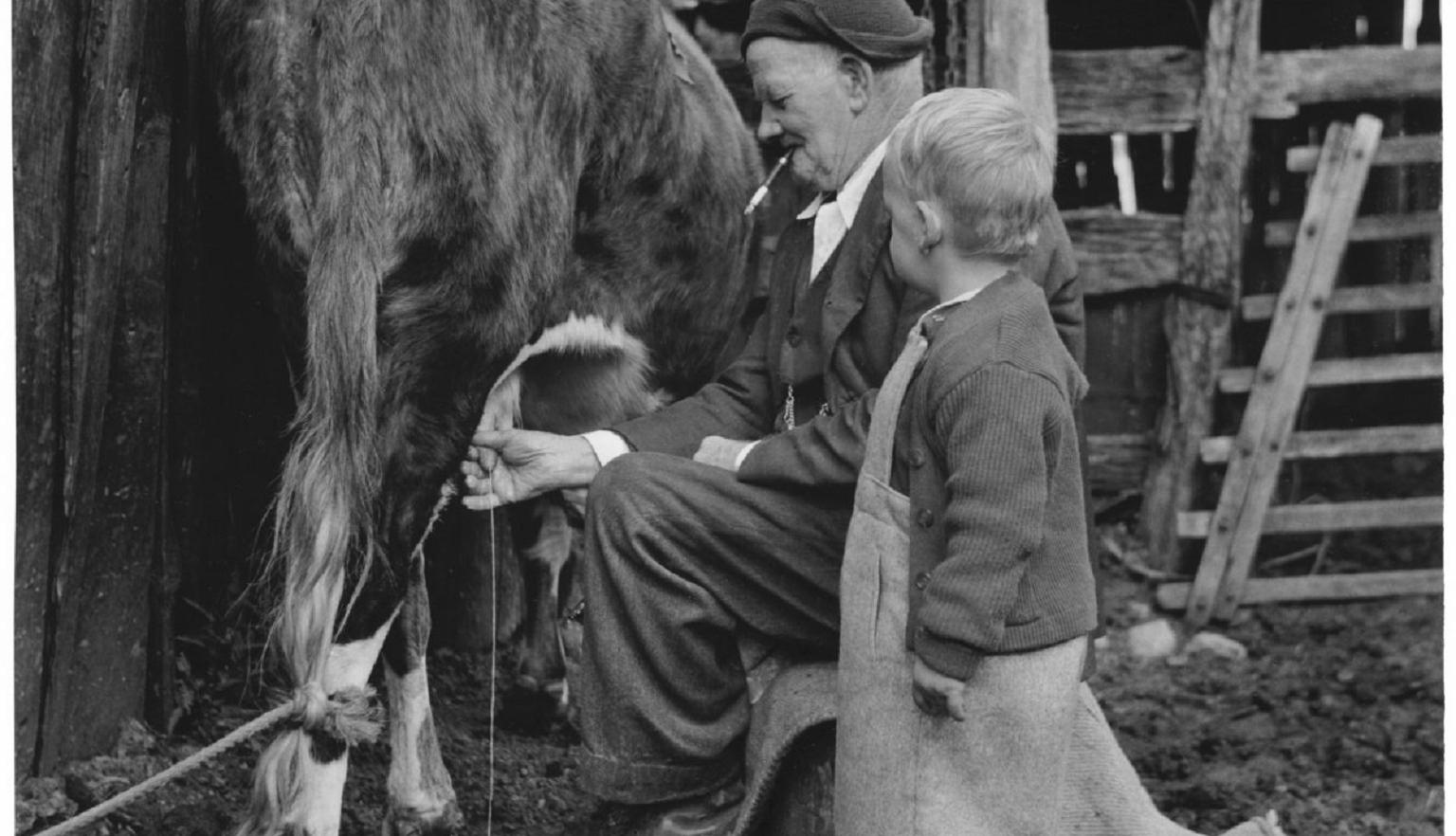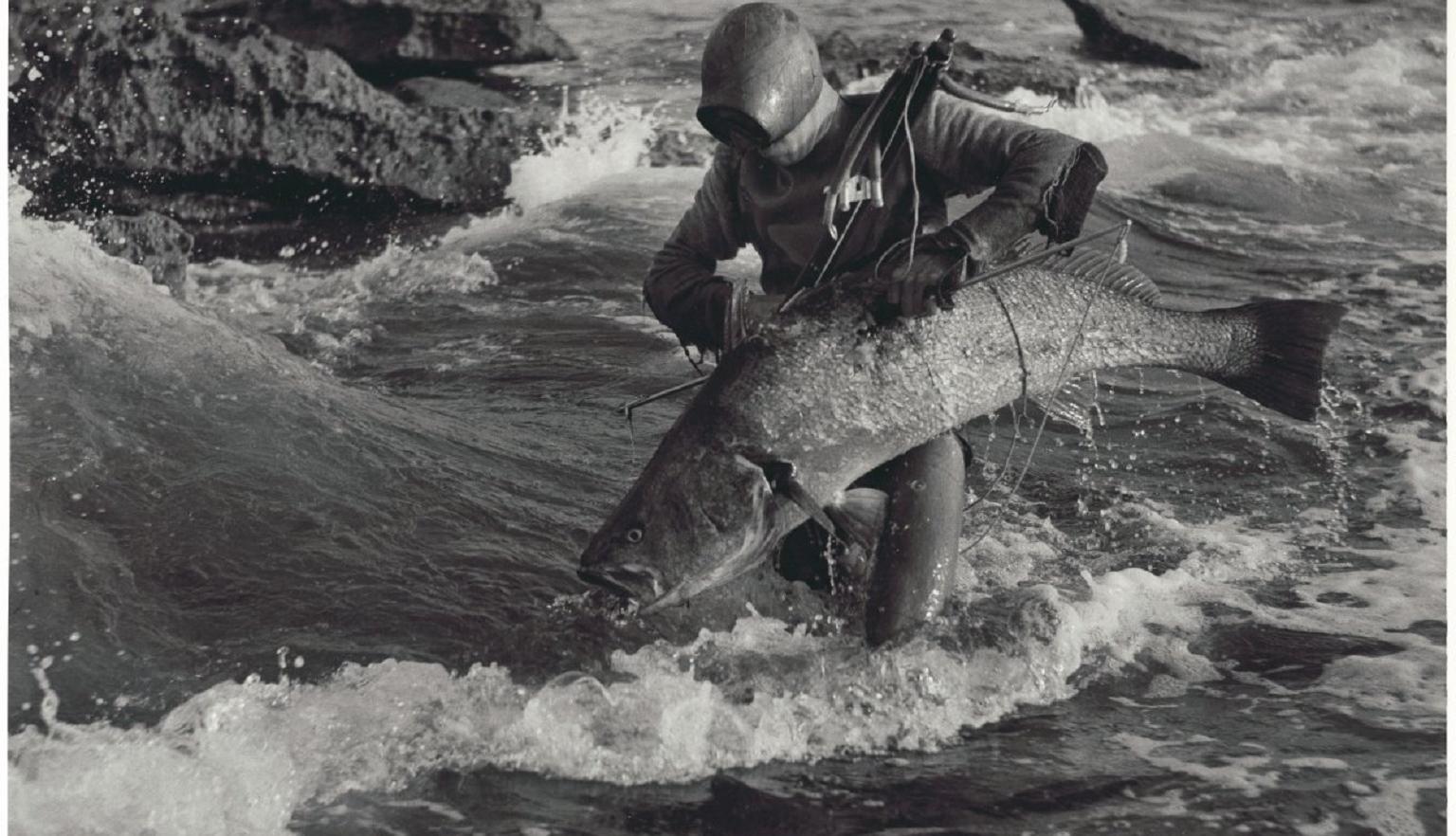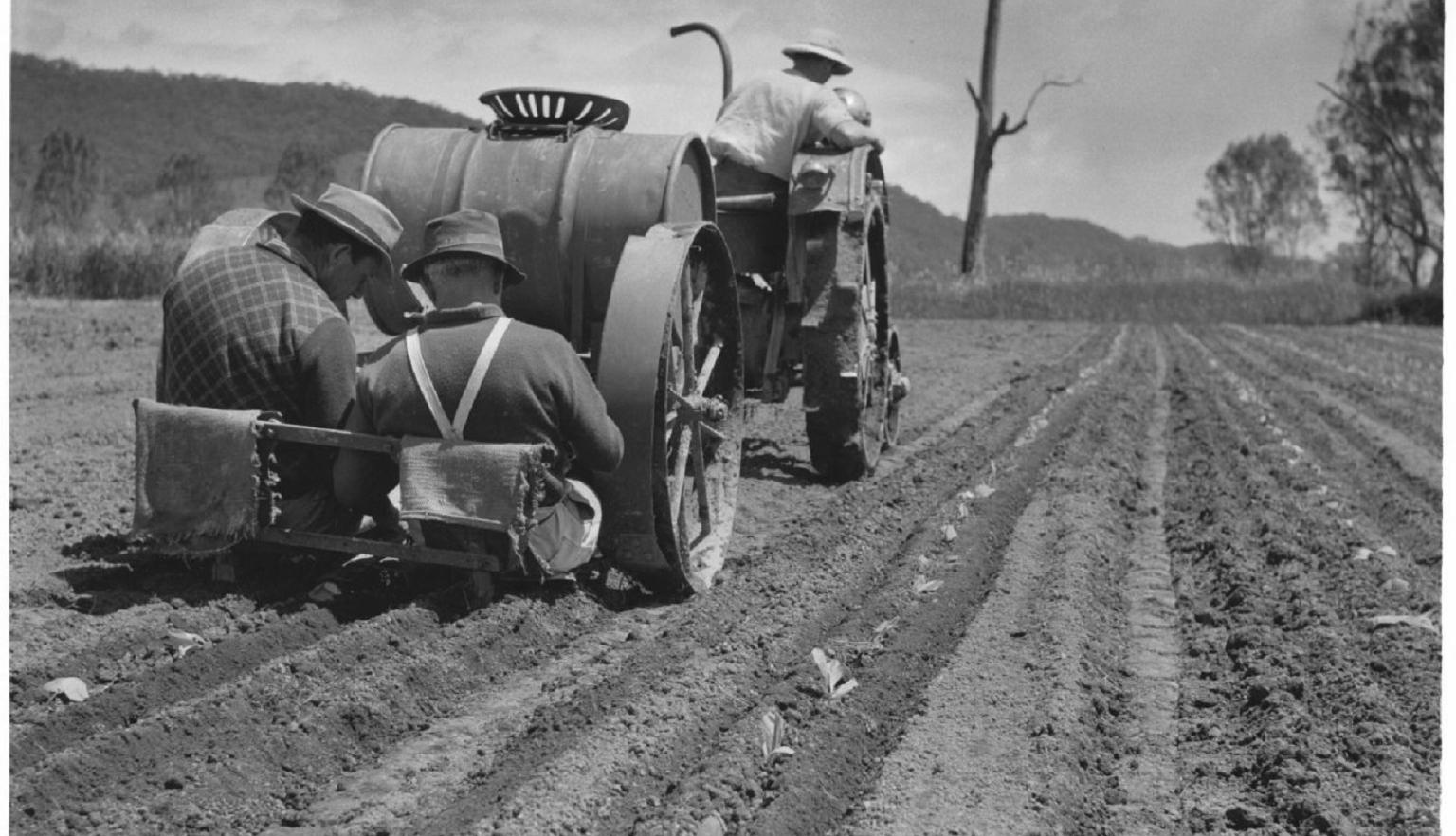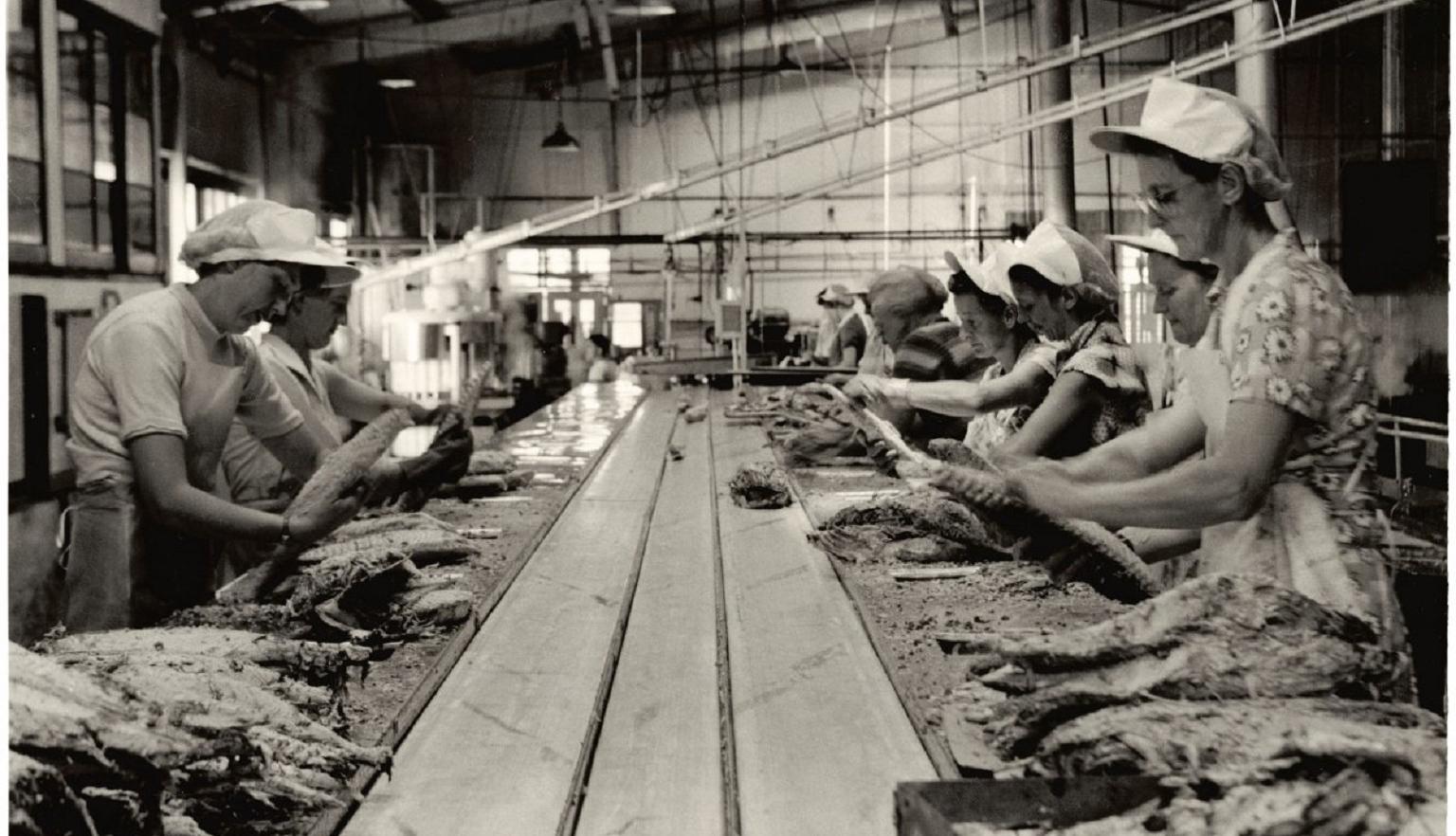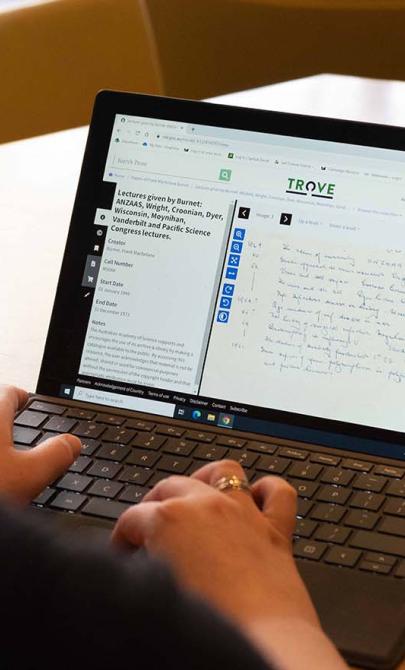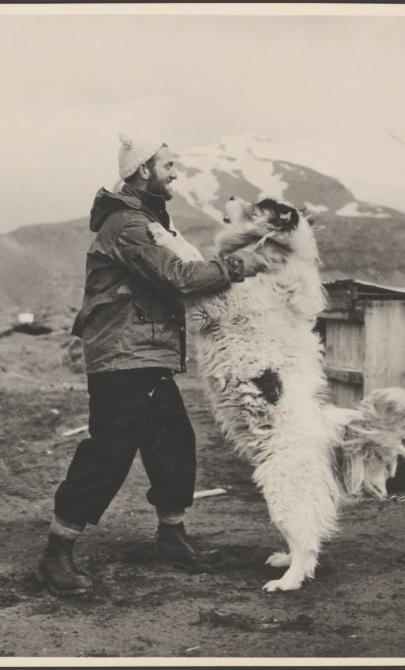Changing technology
The Port Jackson Painter
Works by the so-called Port Jackson Painter are among the earliest and most meticulous attempts by a European to represent Sydney’s Aboriginal peoples and culture.
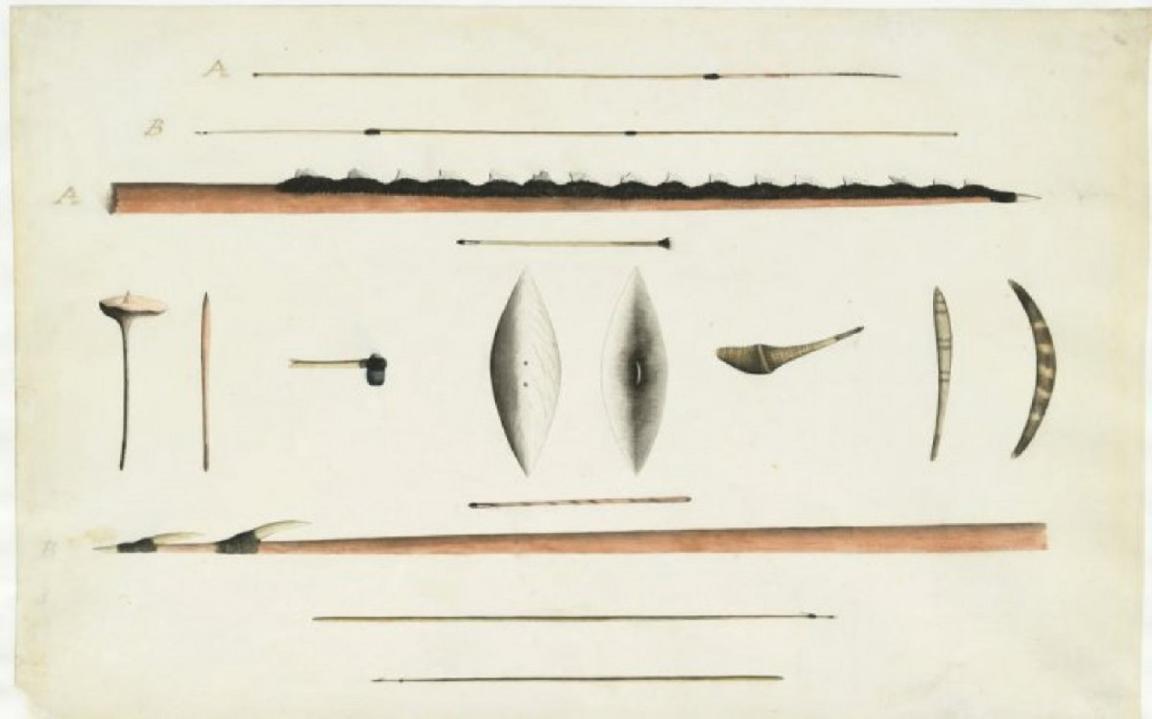
Port Jackson Painter, Aboriginal hunting implements and weapons, 1790, nla.gov.au/nla.obj-135230406
Port Jackson Painter, Aboriginal hunting implements and weapons, 1790, nla.gov.au/nla.obj-135230406
Over 250 works are attributed to the Port Jackson Painter, the name given to an unidentified artist or artists who worked in Sydney from 1788 to the early 1790s.
Most of the watercolours are in the Natural History Museum in London, a handful are in the Rex Nan Kivell Collection at the National Library. This work, from the Library’s collection, depicts several spears, a yilimung (shield), a ngalangala (club), a mugu or mo-go (stone hatchet) and a boomerang.
Activity 1: Analyse
Display this painting and ask your students when and why it might have been painted (using the background information as a guide). Challenge students to analyse each implement depicted:
- What might the implement have been used for?
- What animals might have been hunted with it?
- Why did Aboriginal and Torres Strait Islander peoples hunt animals?
Activity 2: Consider
The implements depicted in the painting were used for hunting. Ask your students to think of implements that might have been used to gather plants.
Activity 3: Write a story
Invite your students to write a short creative story from the perspective of an Aboriginal person living in the Sydney area prior to European settlement. Students should use one of the implements in the painting as a stimulus for their story.
1950s food technologies
These images depict food-related technologies used in the 1950s.
Activity 4: Analyse and identify
Ask your students to analyse each image and identify what is happening in each one. Discuss the following:
- What tools, implements or technologies are shown?
- What food products are being prepared?
- Who might have eaten the foods being prepared?
- What is the same and what is different about the 1950s technologies compared with the technologies shown in the painting of Aboriginal hunting implements?
Modern food technologies
Challenge your students to consider the technologies used to produce the food they eat.
Activity 5: Where did your food come from?
Begin by asking students to list the foods they ate yesterday. For each item, students should identify where the food came from and the technologies that might have been used to prepare it (e.g. farm equipment, washing equipment, mixers, ovens, forklifts, transportation, refrigeration).
